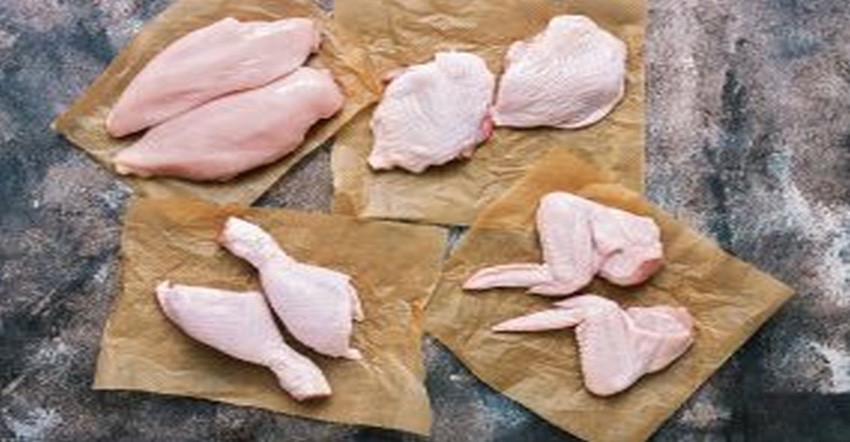USDA: Good luck in reducing salmonellosis
USDA has a plan to reduce salmonella, the cause of one of the top two bacterial foodborne illnesses.
September 24, 2020

The U.S. Department of Agriculture recently announced that its food safety agencies, the Food Safety & Inspection System (FSIS) and the Office of Food Safety (Dr. Mindy Brashears), has a plan to reduce salmonella, the cause of one of the top two bacterial foodborne illnesses.
What is not clear to me is whether the plan is to reduce salmonella contamination rates, particularly in poultry, or to reduce salmonellosis, the salmonella infection of humans.
To be clear, salmonellosis is not totally within USDA’s responsibility. An estimated 38% of salmonellosis is caused by consuming undercooked or mishandled meat and poultry products. The remaining 62% comes from elsewhere.
But chickens in particularly still take the brunt of consumer attitudes about what causes salmonellosis, so the USDA feels a need to help that industry compete with other proteins when it comes to food safety; and that is a good thing.
The bad thing is that efforts in the past have done very little to reduce salmonellosis rates in humans. The Centers for Disease Control & Prevention (CDC) estimated number of illnesses per year has hovered around 1.3 million for as long as I have been involved in food safety issues.
In July of 2005, on the second day on the job as the undersecretary for food safety at USDA, I was in the deputy secretary’s office meeting with him and Beth Johnson, the deputy chief of staff, who I would be reporting to for the next four years.
One of the five things they asked me to accomplish was to get the salmonella rate of contamination down on chicken carcasses. It was at 17% at the time and they considered that an embarrassment to USDA and its public health branch, FSIS.
We held meetings. We conferenced. And I learned a lot.
Among the good things we did was to establish a lower acceptable rate of contamination and categories for plants falling under FSIS inspection and testing for salmonella.
And we published the ratings, at least the Cat 3 ratings.
Cat 1 were plants coming in at less that 50% of the maximum allowable positive tests based on percent positive tests.
Cat 2 plants came in between 50% and the maximum contamination rates.
Cat 3 plants exceeded the maximum allowable number of positive tests.
It worked; we got the contamination rate down to about 6%.
But the subsequent CDC annual reports showed no change in human salmonellosis rates.
Part of that reason was because we measured intact carcasses. Who buys a whole chicken carcass anymore?
Al Almanza later measured chicken parts contamination rates and the numbers were staggering. Our efforts really had little effect on human health, they just raised the price of chicken meat.
I do not want to appear to be too negative, and I really respect Dr. Brashears and all that she has accomplished over the years in her career.
But, and it is a really big BUT, FSIS has no control over what comes into its plants. The bacteria are carried in by live animals, and ordinary slaughter and dressing procedures do not eliminate them.
Anything that can be done to reduce that pathogen load coming into the plants will make me a happier consumer.
All the science in the world cannot keep a chicken carcass from becoming contaminated when defeathering happens and carcasses and parts comingle.
The anti-salmonella effort really, truly, needs to move upstream; and USDA and FSIS have zero authority in the live animal arena.
The only authority that FSIS has is given to it by the Federal Meat Inspection Act, the Poultry Products Inspection Act and the Egg Products Inspection Act. All it can do is perform inspection and condemn adulterated products.
Since salmonella is not considered an adulterant, hands are tied. The agency has no authority to regulate salmonella.
Efforts need to be increased in the breeders and in the hatcheries to reduce the salmonella load, and they need to be increased in the grow-out facilities to reduce the exposure.
These reductions can be accomplished via vaccinations for both breeder pullets and broilers, better hygiene and biosecurity in the barns and managing water systems.
In Europe, they have layered grow out barns, where broilers walk around on a wire mesh floor with fecal material falling thru and being removed by a revolving belt that is underneath.
In the U.S. we have chickens walking around on cement floors, picking up feces from their “roommates” that may or may not be contaminated with intestinal sourced salmonella.
In Europe they also vaccinate a lot more breeders and broilers than we do, and it is working for them.
There is no avoiding the issue that live production is where salmonella is most likely to make its existence known. Slaughter and further processing are simply our last chance to reduce the risk of human infection.
I think USDA and its two public health agencies may be jousting at windmills, just like I did 15 years ago.
About the Author(s)
You May Also Like



